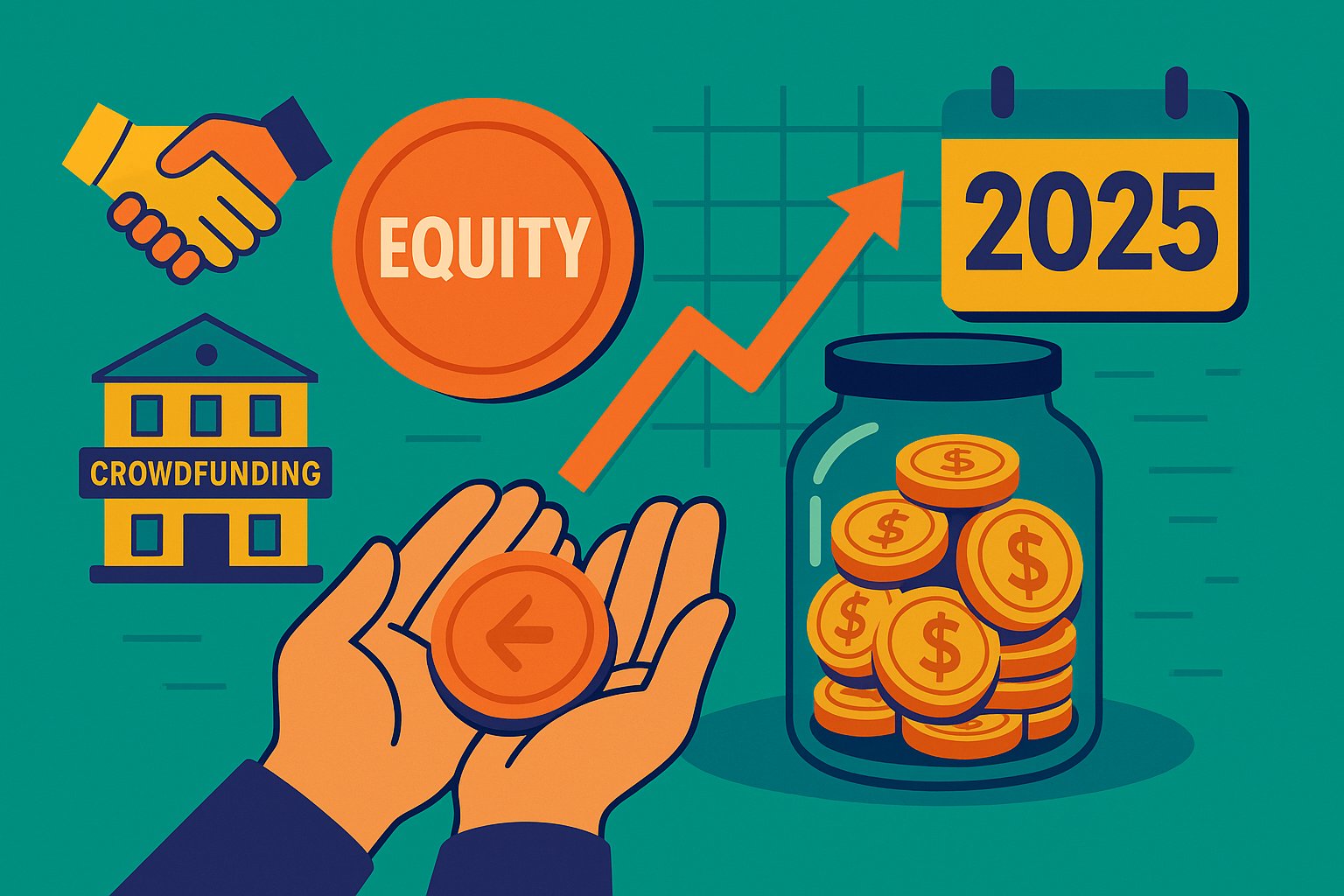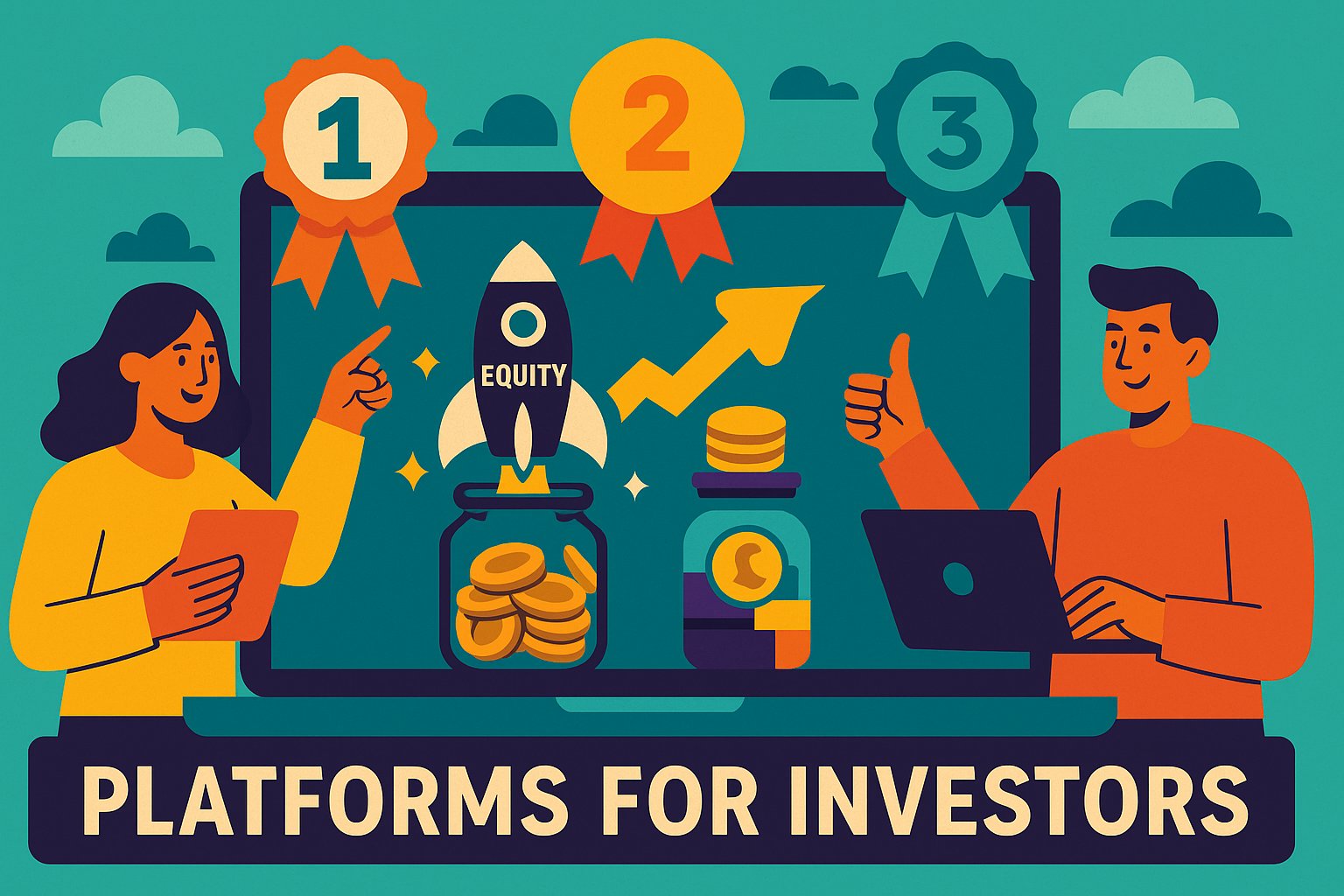Exploring the Equity Crowdfunding Landscape of 2025
The world of investing has transformed dramatically over the past decade, and equity crowdfunding stands at the forefront of this revolution. Once viewed as a niche activity reserved for accredited investors or venture capital firms, crowdfunding has evolved into a dynamic marketplace where everyday investors can participate in high-growth startups from the earliest stages. In 2025, the maturation of regulatory frameworks—coupled with technological advancements in blockchain, data analytics, and digital due diligence—means that equity crowdfunding is no longer an experimental channel but a mainstream investment avenue. Investors now have unprecedented access to curated deal flow, detailed financial projections, and transparent progress updates, all delivered at the click of a button. For aspiring stakeholders seeking to diversify beyond traditional stocks and bonds, understanding how to start investing in equity crowdfunding in 2025 can unlock opportunities to support innovative companies while potentially capturing outsized returns. This guide will walk you through the key considerations, step-by-step processes, and risk management strategies essential to embarking on your equity crowdfunding journey this year.
The Allure of Equity Crowdfunding for Modern Investors
Equity crowdfunding appeals to a new generation of investors eager to back early-stage ventures and share in their success. Unlike reward-based crowdfunding platforms that offer branded merchandise or early product access, equity crowdfunding grants shareholders an ownership stake in the company itself. This alignment of interests fosters a deeper connection between investors and entrepreneurs, as backers gain both financial upside and a sense of contributing to transformative innovations. In 2025, equity crowdfunding campaigns benefit from enhanced due diligence features, including AI-powered risk assessments and real-time community sentiment tracking, which help investors gauge the viability of opportunities before deploying capital. Furthermore, minimum investment thresholds have lowered on many platforms, making it possible to start with as little as one hundred dollars. The combination of professional-grade information, community engagement, and diversified entry points makes equity crowdfunding an attractive complement to traditional investment portfolios.
Choosing the Right Platforms: Where to Begin
Selecting the proper equity crowdfunding platform is a critical first step. Each platform caters to specific industries, funding stages, and investor profiles. Some specialize in technology startups, while others focus on consumer goods or clean energy ventures. To determine the best fit, consider the platform’s track record, total funds raised, number of successful exits, and quality of issuer disclosures. Look for platforms that conduct rigorous background checks on founding teams and provide transparent financial statements audited by reputable third parties. In 2025, top-tier platforms also integrate blockchain for secure share issuance and ownership tracking, enhancing legal clarity and reducing settlement times. Platforms such as SeedWave, CapitalBridge, and FundForward have emerged as market leaders by combining user-friendly interfaces with institutional-grade underwriting. As you explore these venues, pay attention to community features—active discussion forums and investor webinars can offer valuable insights beyond the formal offering documents.
Evaluating Investment Opportunities with a Critical Eye
Not all crowdfunding campaigns are created equal. Critical evaluation of each opportunity is essential to avoid pitfalls and maximize potential returns. Start by assessing the founding team’s expertise, track record, and commitment to the business vision. Founders with prior entrepreneurial successes or deep domain experience are more likely to navigate challenges and pivot effectively. Next, review the company’s business model and market opportunity: is the product or service addressing a clear pain point with a sizable addressable market? Financial projections should be realistic and backed by verifiable data, not just optimistic forecasts. Additionally, examine the company’s valuation relative to comparable peers and historical financing rounds; overvalued deals can erode return potential. In 2025, investor-friendly platforms often provide standardized scorecards that rank campaigns based on metrics like revenue growth, customer acquisition cost, and burn rate. Use these tools as a starting point, but supplement them with your own due diligence, such as customer interviews or independent market research.
Crafting a Diverse and Resilient Crowdfunding Portfolio
Diversification remains a cornerstone of prudent investing, and equity crowdfunding is no exception. Given the inherent volatility and high failure rate of startups, spreading investments across multiple campaigns can mitigate idiosyncratic risk. Aim to balance allocations between different stages—seed rounds, Series A, or bridge financings—as well as across industries to capture diverse growth trajectories. For example, combining a clean technology startup with an emerging direct-to-consumer brand and a healthcare software provider can smooth overall performance if one sector underperforms. In 2025, certain platforms offer built-in portfolio tools that suggest optimally diversified baskets based on your risk profile and investment horizon. These automated features use machine learning to recommend allocations that target a specific internal rate of return, taking into account each campaign’s risk-adjusted score. As you assemble your portfolio, periodically rebalance by trimming over-weighted positions and adding new opportunities, ensuring that no single investment jeopardizes your long-term objectives.
Navigating Regulations and Compliance in 2025
Equity crowdfunding regulations have evolved significantly since the JOBS Act first laid the groundwork in the United States. In 2025, investors benefit from clearer guidelines and enhanced investor protections. Under current rules, non-accredited investors can participate up to specified annual limits, while accredited investors enjoy fewer restrictions and broader access. Platforms must register offerings with the Securities and Exchange Commission or operate under Regulation Crowdfunding (Reg CF) or Regulation A+. International investors may also engage through approved cross-border provisions, but should be mindful of local tax implications and foreign exchange considerations. Always review the offering circular and consult with a qualified adviser if needed, ensuring you understand lock-up periods, voting rights, and liquidity constraints. Some jurisdictions have introduced secondary trading markets for crowdfunded shares, improving exit options, but these venues may carry additional fees and regulatory oversight. Staying informed about the evolving compliance landscape will protect your interests and enhance confidence in your investments.
Mitigating Risks and Aiming for Sustainable Growth
Startup investing inherently carries higher risk than established equities. To mitigate downside, conduct ongoing monitoring and maintain realistic expectations about timeliness of returns. Most equity crowdfunding holdings require multi-year horizons before liquidity events such as acquisitions or follow-on financing rounds occur. Maintain frequent communication with portfolio companies by accessing investor updates on the platform dashboard or joining scheduled founder webinars. Evaluate key performance indicators like monthly recurring revenue, customer churn rate, and cash runway to identify potential red flags early. Many platforms now offer alert systems that notify investors when campaigns hit significant milestones or face critical challenges, enabling timely decision-making. Additionally, consider co-investing alongside professional venture funds when possible; syndication with experienced lead investors can provide an extra layer of due diligence and strategic support for the startups you back.
Actionable Steps to Kickstart Your Equity Crowdfunding Investments
Beginning your equity crowdfunding journey requires a structured approach. First, set clear investment goals: define how much capital you can allocate, your desired time horizon, and acceptable loss thresholds. Next, complete the registration process on your chosen platforms, which typically involves identity verification and accreditation checks if applicable. Once approved, explore the deal flow section and subscribe to email alerts for campaigns that match your criteria. Allocate funds to a small selection of early-stage deals, aiming to invest in two to three campaigns initially to gain hands-on experience without overexposure. As you grow comfortable, expand your portfolio by following your performance data and leveraging platform portfolio analytics. Participate actively in online communities to share insights and learn from peers. Finally, document lessons learned—both successes and failures—to refine your investment thesis and enhance future decision-making.
Looking Ahead: The Long-Term Impact of Equity Crowdfunding
Equity crowdfunding is more than an investment channel; it represents a democratization of capital markets. In 2025 and beyond, crowdfunding platforms are fostering a new class of investor-entrepreneur partnerships that drive innovation and job creation worldwide. As regulatory frameworks mature and secondary markets expand, early backers may enjoy improved liquidity and enhanced governance rights. Companies that succeed through crowdfunding not only secure capital but also build dedicated customer communities invested in their growth. From clean energy startups tackling climate change to biotech firms revolutionizing healthcare, the impact potential is immense. By supporting these ventures, equity crowdfunding investors play a direct role in shaping the future economy—an opportunity that extends beyond monetary returns to meaningful societal contributions.
Charting Your Equity Crowdfunding Journey
Embarking on the path of equity crowdfunding in 2025 offers the dual thrill of supporting groundbreaking ventures and pursuing potential financial gains. Armed with a clear understanding of the landscape, a methodical evaluation process, and a diversified portfolio strategy, you can navigate this exciting frontier with confidence. Remember that successful equity crowdfunding investing demands patience, continuous learning, and active engagement with the startups you back. As you launch your journey, stay informed about regulatory developments, leverage community insights, and embrace both the risks and rewards inherent in early-stage investments. By doing so, you’ll be well-positioned to discover tomorrow’s market leaders and to write your own chapter in the evolving story of democratized finance.




